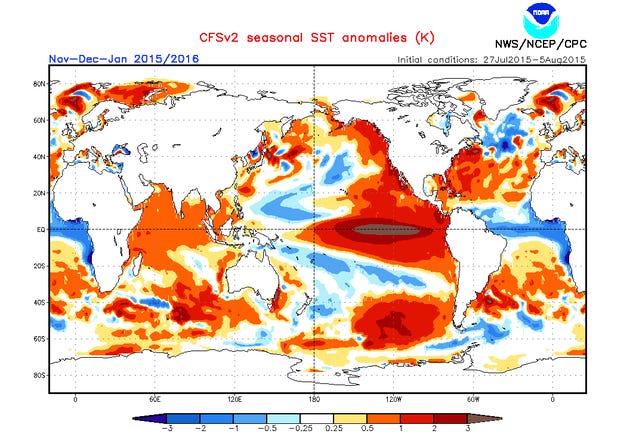
Now, a new study links them to elevated ocean temperatures, with algae growth spurred by a mysterious patch of warmer-than-average ocean that scientists first noted years earlier and had dubbed "the warm blob."
The warm blob, which first appeared in 2013 and hung around into 2014, helped one species of toxic algae — Pseudo-nitzschia australis — increase in unprecedented numbers and expand farther north than was previously possible, with devastating effects on a wide range of marine life. [Yuck! Photos of 'Rock Snot' Algae Infestations]
Toxic algae events that are serious enough to merit fishery closures occur off the coasts of Washington and Oregon every three to five years, but the 2015 bloom was the largest by far, according to Ryan McCabe, the study's lead author and a researcher at the University of Washington's Joint Institute for the Study of the Atmosphere and Ocean in Seattle.
"And our results show that it was connected to the unusual ocean conditions,” McCabe said in a statement.
The warm blob began as a large, circular zone in the Pacific Ocean, about 1,000 miles (1,600 kilometers) long; 1,000 miles wide and more than 300 feet (90 meters) deep, spreading out along the coast and moving closer to shore in 2015. This infusion of warm water accompanied currents carrying nutrients from the deep sea, enabling P. australis to reproduce faster, the researchers discovered.

P. australis produces a neurotoxin called domoic acid, which can cause seizures and gastrointestinal distress, and is sometimes lethal. When shellfish and small fish like anchovies eat the algae, they can transmit the toxin to animals that feed on them — including people.
And because P. australis blooms were more widespread in 2015, more marine mammals were vulnerable to the impacts of the toxic algae, the researchers said.
Scientists have long studied the cyclical growth of algae populations in coastal waters, building a 25-year record that tracks the ebb and flow of the algae and the toxins they impart to local marine wildlife. By establishing a link between warmer oceans and increased toxic algal growth, the new study hints that rising global temperatures could make deadly blooms a more common occurrence.
"Species like Pseudo-nitzschia are extremely well poised to take advantage of background warming," McCabe said. "Pseudo-nitzschia are always out there along our coast. The fact that they are almost engineered to take advantage of situations like this — warm temperatures and low nutrients — that is concerning."
By | October 3, 2016 03:37pm ET
The study was published online Sept. 20 in the journal Geophysical Research Letters.
source: http://www.livescience.com/
original story HERE
Get more of The Global Warming Blog. Bookmark this page and sign up for the blog’s free RSS Feed. Sign up for free Global Warming Blog by clicking here. You will automatically be emailed a regular summary of the latest global warming headlines.
To help do something about the climate change and global warming emergency, click here.
Sign up for our free Global Warming Blog by clicking here. (In your email, you will receive critical news, research, and the warning signs for the next global warming disaster.)
To share this blog post: Go to the Share button to the left below.

Be the first to comment
Sign in with